Despite its location near the Arctic Circle, Iceland might not be as cold as you would think. This is your ultimate guide to Iceland’s climate, helping you prepare for your trip and know what to expect, whether it’s summer or winter.
Brief Intro to Iceland’s Climate
When you think of Iceland, you might picture snow-covered mountaintops, icy glaciers, and blizzard conditions. After all, the word ice is in the country’s name!
While the Icelandic weather is famously unpredictable, the iceland average temperature range from the high 30s (in Fahrenheit) during the coldest months to the low 60s in the warmer summer months, showcasing the country’s surprisingly mild climate given its northern location.
Visitor’s might be surprised to know that Iceland isn’t frigid and snowy year round. Summer brings regular temperatures in the high 50’s and even 60’s at times and most of the snow has melted by July.
Overall, the coldest months of the year are from November to March with the warmest being June to August. Snow fades to rain by the end of May and most of the snow in the interior of the country has completely melted by July.
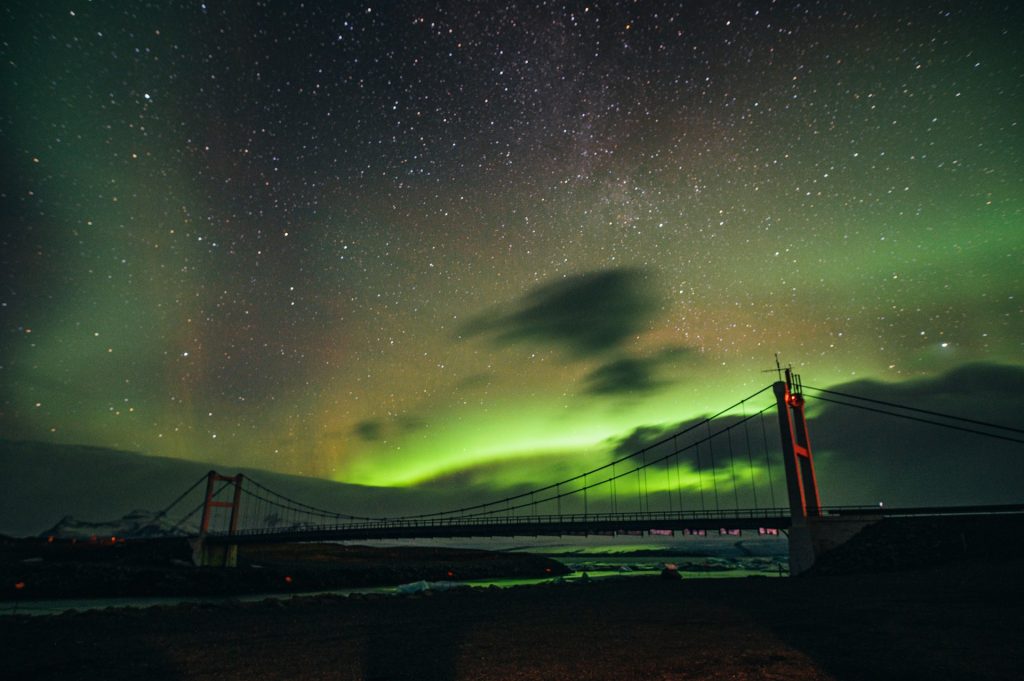
Icelandic weather is very hard to predict-it changes rapidly
There are several sayings about the weather in Iceland, “There’s no such thing as bad weather, only bad clothing.” and “If you don’t like the weather, wait five minutes.” Both of these give traveler’s an idea of what they can expect weather-wise.
Anyone who takes a trip to Iceland will be able to testify that the weather can change at a moment’s notice and is very difficult to predict. One minute its sunny and warm with no clouds on the horizon and the next it’s suddenly snowing or raining!
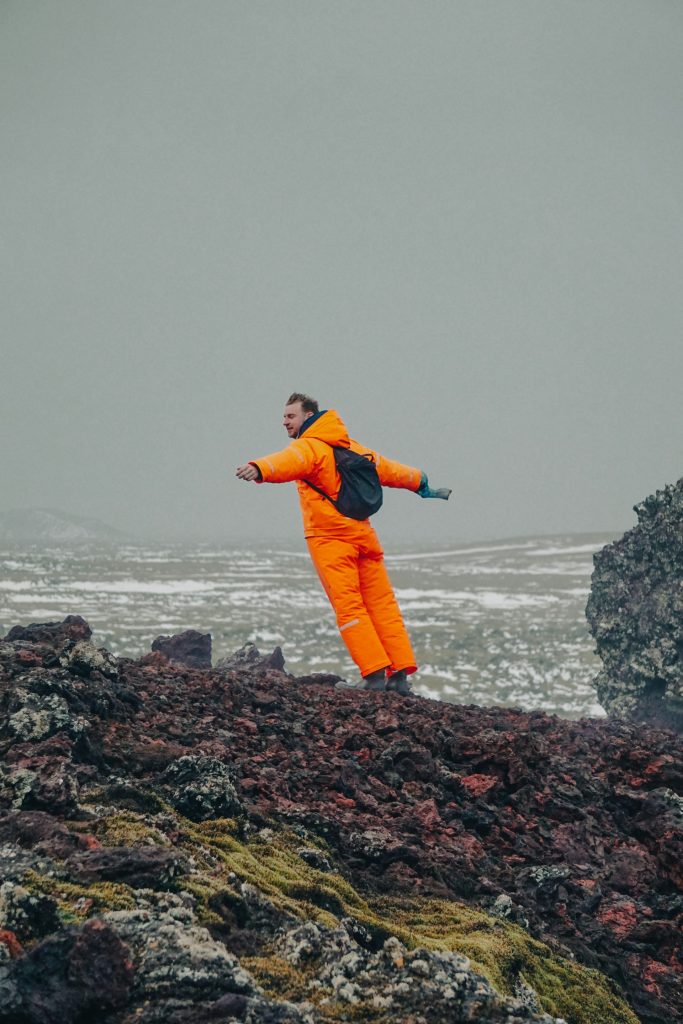
In general, North Iceland is colder than South Iceland
North Iceland is colder than South Iceland simply due to its geographic position at a higher latitude. It also avoids the Gulf Stream that sweeps across Southern Iceland, keeping it more mild. Northern Iceland’s unofficial capital (and largest city), Akureyri, is only 62 miles away from the Arctic Circle. Overall, North Iceland only sees a marginal temperature difference from South Iceland.
The Coldest Months in Iceland
Iceland’s coldest month’s are November through March. Visitor’s during this time of year will experience plenty of snow and icy conditions. Average temperatures in the capital top out in the high 30’s in December and January with the coldest temperatures dipping well into freezing and even negative at times, especially when factoring in wind chill.
Driving can be difficult at this time of year and you’ll want previous experience driving in winter weather. Renting a 4×4 vehicle is also a good idea during this time of the year.
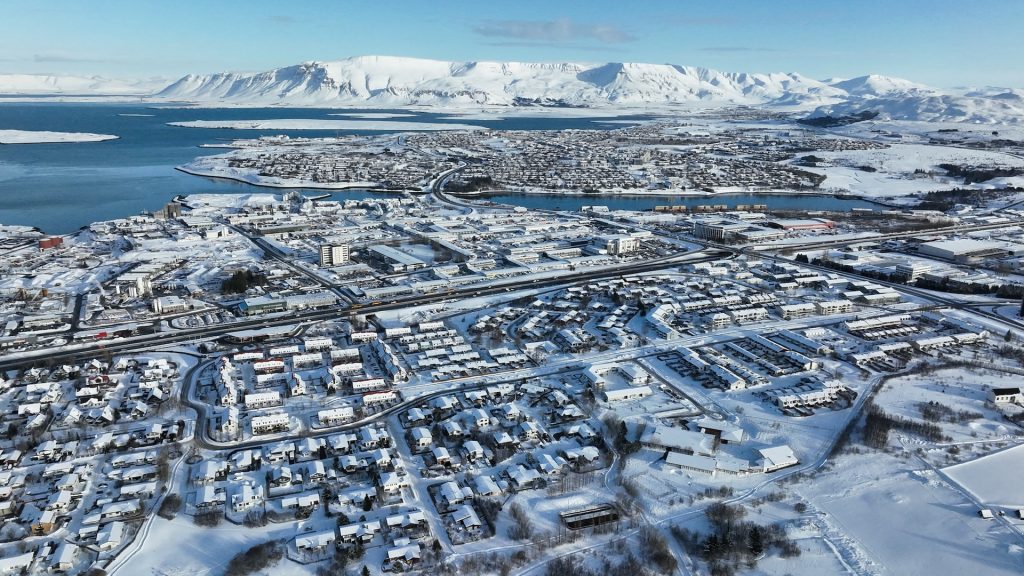
The Warmest Months in Iceland
If you’re looking to visit Iceland during the best weather months, June to August is ideal. Precipitation is low and temperatures usually hover between 60°F as a high and the high 40’s for a low.
Snow is extremely rare during this time of year but rain is common. These months see the least precipitation of the year with about two inches of rain on average.
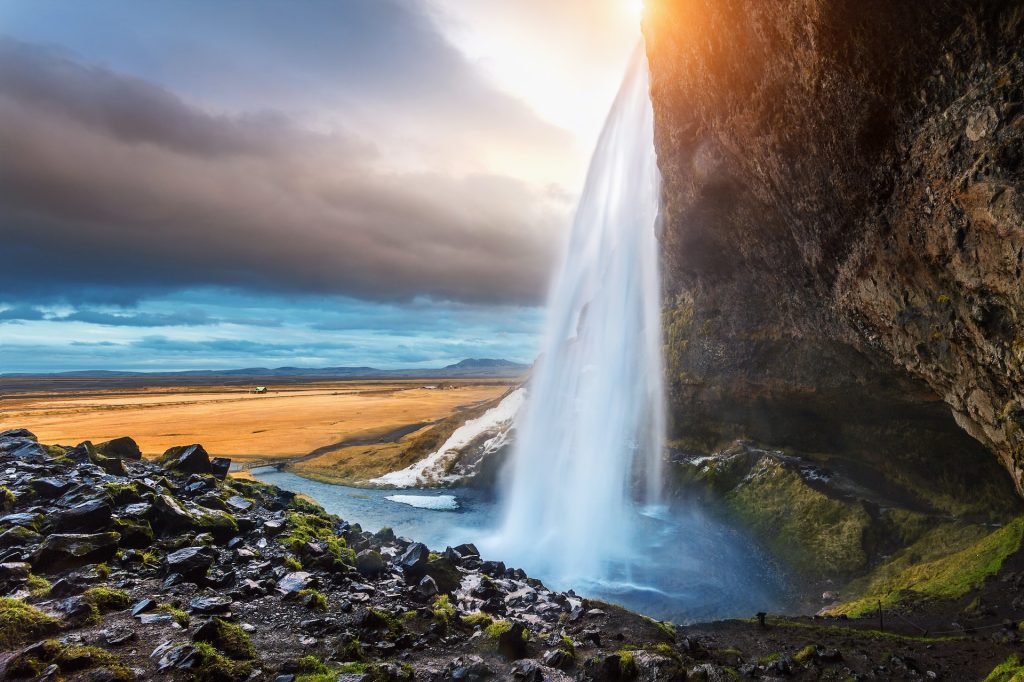
How to Prepare for a Trip (and the Cold) When Traveling to Iceland
The best way to prepare for a trip to Iceland is to book your car rental and accommodation in advance and to bring plenty of layers and waterproof clothing!
Dressing well is the most important factor for a trip to Iceland – especially in the winter. Remember that famous saying about having the right clothing? You’ll want to pack layers and warm, waterproof items like insulated winter jackets with a rain shell, waterproof gloves, scarves, hats, and insulated hiking boots if you plan on taking part in outdoor activities.
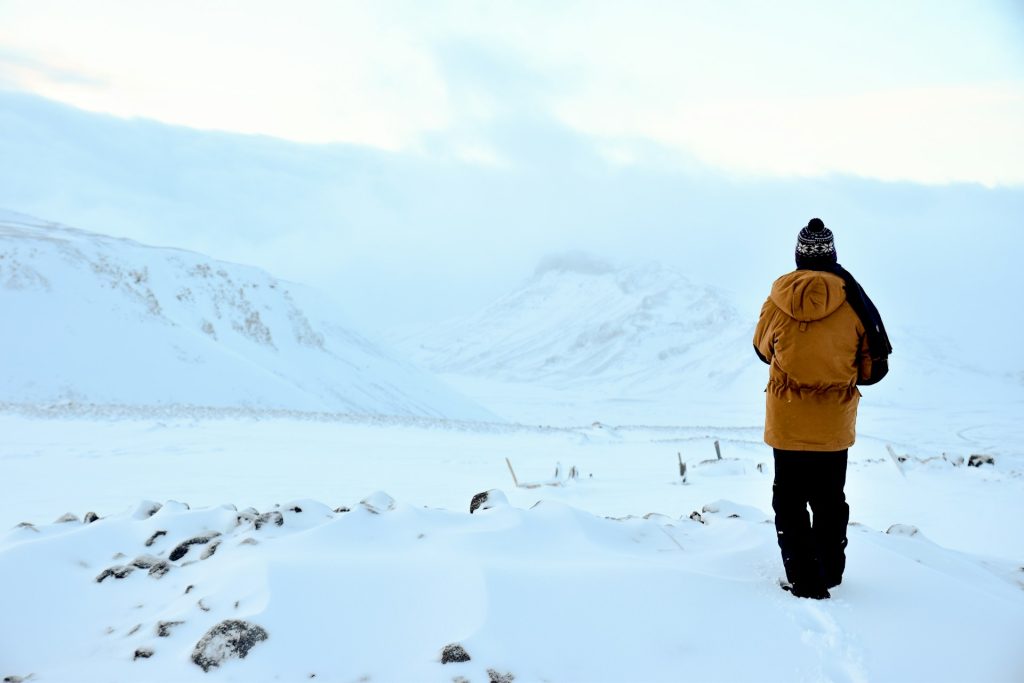
Summer doesn’t require nearly as much cold weather gear but you’ll still want to bring a rain jacket with a hood, thick sweater, and potentially waterproof hiking boots depending on what you plan to do. It’s almost never shorts and sandals weather in Iceland, but you might be able to get away with a t-shirt at times.
As we mentioned, book your car rentals and accommodation well in advance during the popular spring and summer months. Winter isn’t as competitive in terms of accommodation but can get competitive when renting a 4×4 vehicle. Certain activities can also sell out quickly like northern lights tours in winter and whale watching excursions in the summer.

Exploring Iceland’s Natural Wonders Across Seasons
Iceland, a land of fire and ice, nestled at the edge of the Arctic Circle and cradled by the North Atlantic currents, offers an array of unique natural phenomena and weather patterns that captivate travelers year-round.
Chasing the Northern Lights and Embracing the Icelandic Winter
Winter in Iceland, particularly from December to January, presents a landscape transformed into a snowy wonderland. The darkness of the Icelandic winter is illuminated by the ethereal dance of the Northern Lights, a spectacle best observed away from city lights and under the clear, dark skies of Iceland’s vast wilderness areas. This season, despite the cold, is warmed by the Gulf Stream, ensuring that the coastal areas remain somewhat milder than one might expect so close to the Arctic Circle.
However, the Icelandic weather’s unpredictability is heightened in winter. The wind chill factor can make it feel colder than the actual temperature, a crucial consideration when packing for your trip to Iceland. Layering is key, as is waterproof and windproof gear, to enjoy everything from the serenity of Thingvellir National Park to the excitement of ice cave tours in Vatnajökull National Park, where natural ice caves offer a magical escape into an icy realm.
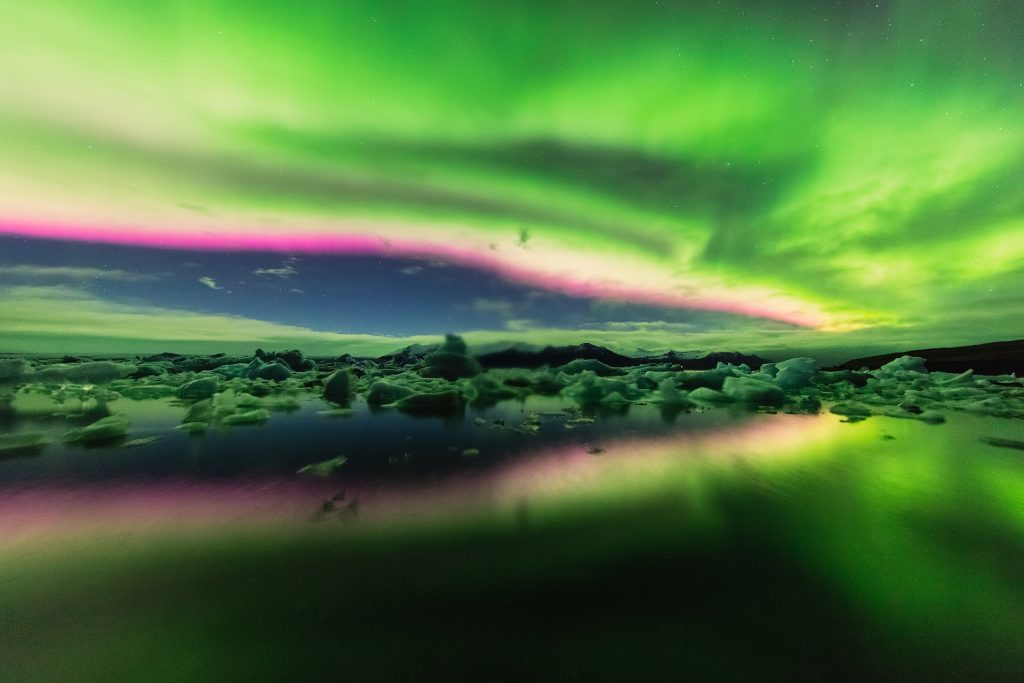
The Midnight Sun and Warm Summer Days
As the seasons turn, the Icelandic landscape undergoes a dramatic transformation. The midnight sun graces the sky from late May through August, creating long days filled with light and offering ample time for exploration and adventure. These months, known for their relatively warm summer days, are perfect for visiting Iceland’s iconic natural attractions, including the geologically significant Thingvellir National Park and the breathtaking natural Black ice caves, which remain a cool respite from the summer warmth.
During this period, the average temperatures in Iceland become a pleasant surprise for many visitors. With the influence of the North Atlantic and the Gulf Stream, Iceland experiences milder temperatures than other regions at similar latitudes. This climate makes summer an ideal time to visit Iceland, offering comfortable conditions for everything from hiking to soaking in geothermal pools.
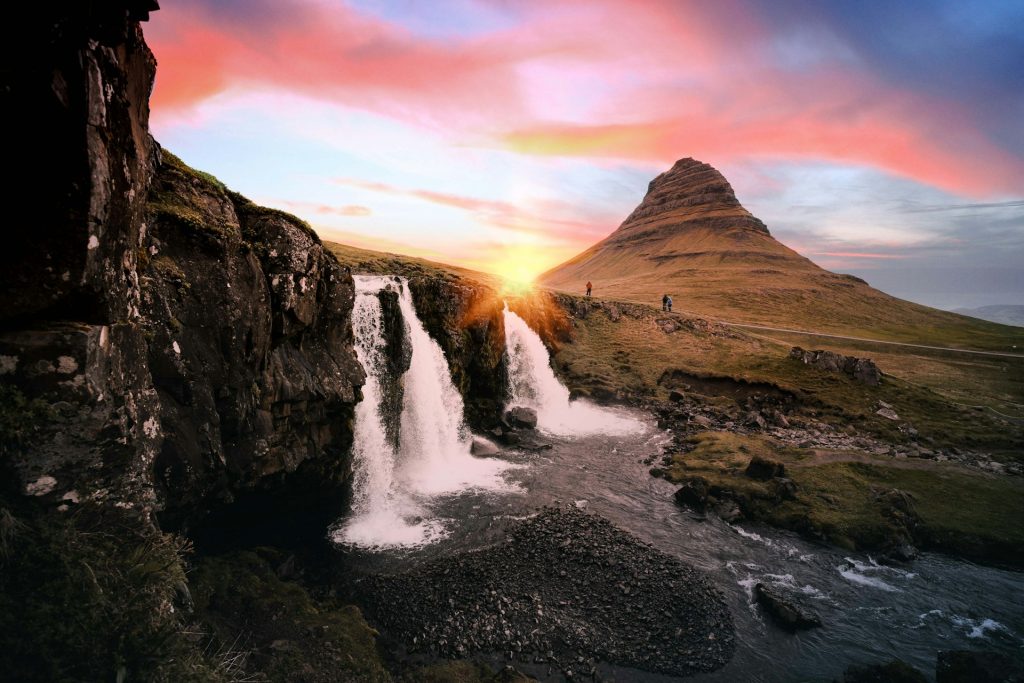
When is the Best Time to Visit Iceland?
The best time to visit Iceland truly depends on what you want to experience. The average temperatures in Iceland can guide you in choosing the right season for your adventures. Whether it’s the mystical allure of the northern lights in winter or the endless daylight of the midnight sun in summer, each season in Iceland has its unique charm and array of activities.
Booking your trip to Iceland requires consideration of not just the places you wish to explore but also the whims of Icelandic weather. Regardless of when you decide to visit, embracing the Icelandic saying, “There’s no such thing as bad weather, only bad clothing,” will ensure you enjoy your journey to the fullest.

Is Iceland Cold?
Iceland’s weather is unpredictable at best, but with a little preparation you’ll be right as rain!
Whether you decide to visit in the dead of winter or middle of summer, booking a rental car through Firefly Iceland Car Rentals is the best way to see the beautiful country of Iceland.





